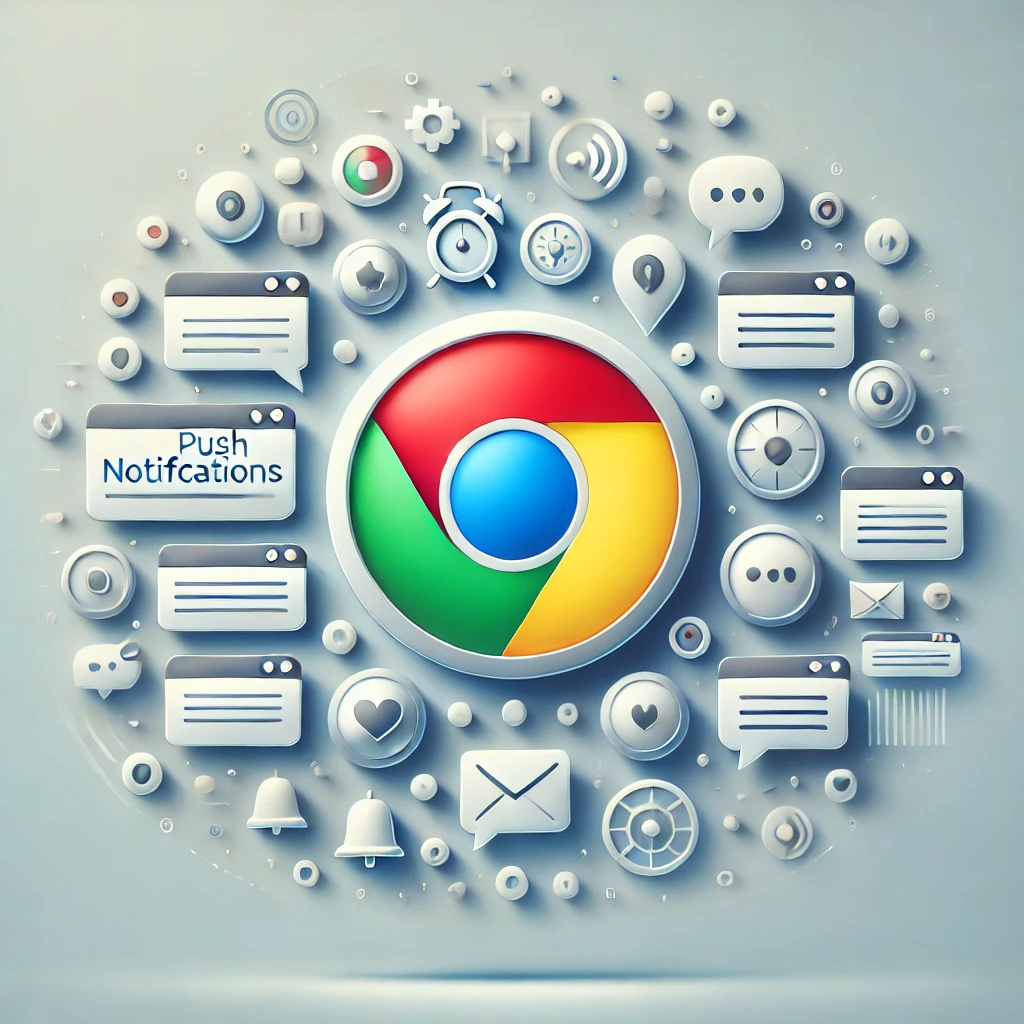
December 23, 2024
How to Enable and Use Push Notifications on Chrome
Push notifications on Chrome have become an essential tool for businesses and developers to engage with users in real time. Google Chrome, being one of the most widely used web browsers globally, offers robust support for push notifications on Chrome. In this article, we’ll explore everything you need to know about setting up and using push notifications on Chrome.
What Are Push Notifications?
Push notifications are short, clickable messages delivered directly to a user’s device. These notifications appear even when the user isn’t actively browsing your website or using your application. They can be used to:
- Share updates and news.
- Promote special offers and discounts.
- Notify users about important events or alerts.
Benefits of Using Push Notifications
- Wide Reach: With Chrome’s massive user base, your push notifications have the potential to reach millions.
- Real-Time Communication: Deliver messages instantly, ensuring timely communication with your users.
- Higher Engagement Rates: Push notifications typically have higher click-through rates compared to emails or SMS.
- Cost-Effective: Unlike SMS or paid ads, push notifications can be sent for free, making them a budget-friendly option.
How to Enable Push Notifications
For Users:
- Open Google Chrome on your device.
- Visit the website from which you want to receive push notifications.
- When prompted, click Allow to enable notifications on Chrome.
- To manage notifications, go to Settings > Privacy and Security > Site Settings > Notifications. Here, you can customize permissions for individual websites and control push notifications.
For Website Owners:
- Set Up a Service Worker: A service worker is a script that runs in the background and handles push events, enabling push notifications.
- Use a Push Notification Service: Platforms like AsyncPush make it easy to integrate push notifications into your website.
- Obtain User Permission: Always ask users for permission before sending push notifications.
- Send Push Notifications on Chrome: Use tools like Firebase or AsyncPush to craft and send your messages.
Best Practices for Push Notifications
- Keep It Short and Sweet: Ensure your message is concise and actionable in the push notifications.
- Use Personalization: Address users by their names or include content relevant to their preferences in the push notifications.
- Send at Optimal Times: Analyze user behavior to determine the best times for sending push notifications.
- Provide Value: Ensure every push notification adds value to the user’s experience.
- Include a Call-to-Action (CTA): Encourage users to take immediate action by including clear CTAs in the push notifications.
Troubleshooting Common Issues with Push Notifications
- Users Are Not Receiving Push Notifications
- Check if notifications are enabled in Chrome settings.
- Ensure the website’s service worker is active and properly configured to handle push notifications.
- Push Notifications Are Not Displaying Correctly:
- Verify that your notification payload includes all required fields (title, body, and icon).
- Test on multiple devices and browsers to ensure compatibility with push notifications.
AsyncPush simplifies the process of setting up and managing push notifications. With features like:
- Easy Integration: Quickly integrate push notifications with your website.
- Analytics Tracking: Monitor user engagement with your push notifications and optimize your campaigns.
- Customizable Options: Tailor push notifications to match your brand.
By using AsyncPush, you can ensure a seamless experience for both you and your users.
Final Thoughts on Push Notifications
Push notifications offer a powerful way to stay connected with your audience. By implementing best practices and leveraging tools like AsyncPush, you can drive engagement and achieve your goals effectively. Start using push notifications on Chrome today to unlock their full potential!
FAQs
- Are push notifications free? Yes, sending push notifications on Chrome is free. However, you may incur costs if you use third-party services for advanced features.
- Can I disable push notifications from a website? Absolutely! You can manage or disable push notifications on Chrome via Chrome’s settings.
- Do push notifications work offline? Yes, push notifications on Chrome can work offline if the service worker is properly configured.
Learn More About Web Push Notifications
For more detailed information on how push notifications work, check out MDN Web Docs on Push Notifications.
